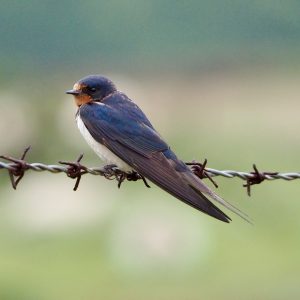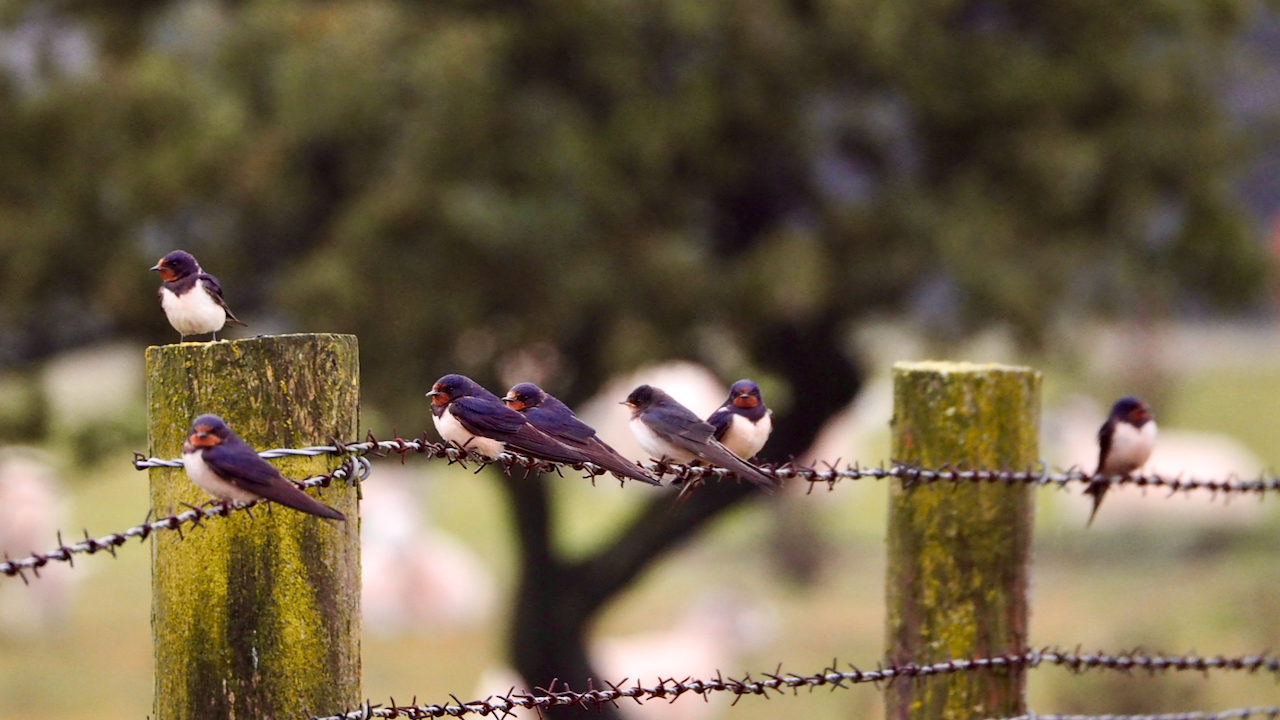One of those joyous moments is when nature comes so close. It may be fleeting, so quick you’ve barely time to register. Or it may last longer, with time to appreciate the colours, sounds and textures.

It is said that when swallows skim low over water, rain is coming. Conversely, a high flight signifies fine weather. The birds were active today as I walked down Aireyholme Lane beneath a capped Roseberry Topping. Flying low over the pasture chasing the insects and resting on the barbed wire fence. With no river hereabouts, I guess the wet dewy grass would have sufficed, but the rain held off.
The Anglo-Saxon name for a swallow was ‘Sunlewe‘. In Gaelic, it is ‘Gobhlan-gaoithe‘, which Google translates as ‘wind chime’. Quite quaint. In Welsh, the name is ‘Gwennol‘ or ‘Gwenfol‘, literally meaning ‘white belly’.
The Swallow is a venerated bird, heralding the coming of summer. The old saying “One Swallow does not make a Summer” can be found in most European languages. It is first attributed to the Greek philosopher, Aristotle.
One Cornish custom is to jump on seeing the first Swallow in spring and in some parts of England, April 15th is called “Swallow day,” because that is the date when Swallows are thought to first appear.
Swallows are held in such respect that it is considered unlucky to kill one. The Magyars in Hungary believe that if a swallow is killed then the cows’ milk will turn to blood.
In Ireland, the swallow is called the ‘devil’s bird’ in the belief being that “on everyone’s head there is a particular hair which if the Swallow can pluck off dooms the wretched individual to eternal perdition”. Should a Swallow alight on one’s shoulder or die in one’s hand then these are sure signs of death.

One question that has vexed observers of nature for centuries has been where do the swallows go in winter. Aristotle said that they hibernated in hollow places in winter. Pliny, a Roman scholar, believed too that they retired at the approach of winter to the deepest recesses of rocks and mountains, and there remained in a torpid state until Spring. Gilbert White of Selborne was a strong believer in this hibernation theory. Indeed, it was a Cornish belief until comparatively modern times was that they spent the winter in disused tin mines and holes in the cliffs.
Of course, we now know that Swallows winter as far away in South Africa. They’ll be leaving next month taking about six weeks to complete the 6,000-mile journey, flying low during the day and covering about 200 miles per day.
At odds with the belief that it was considered unlucky to kill a swallow, the bird was greatly esteemed for its medicinal value. Their ashes mingled with honey into a poultice was considered a remedy for the ‘falling sickness’ or epilepsy, ‘dimness of sight’, and ‘blear eyes’. A Swallow’s heart was eaten to strengthen the memory or as a cure for the ague. Its blood, particularly when drawn from under the left-wing, was thought to be a remedy for the eyes. A Chelidonius is a stone, found in the stomach of young Swallows, and was used as a remedy for the ‘falling sickness’ in children, being hung from the neck or bound to the arm.
[Ref029]

Leave a Reply